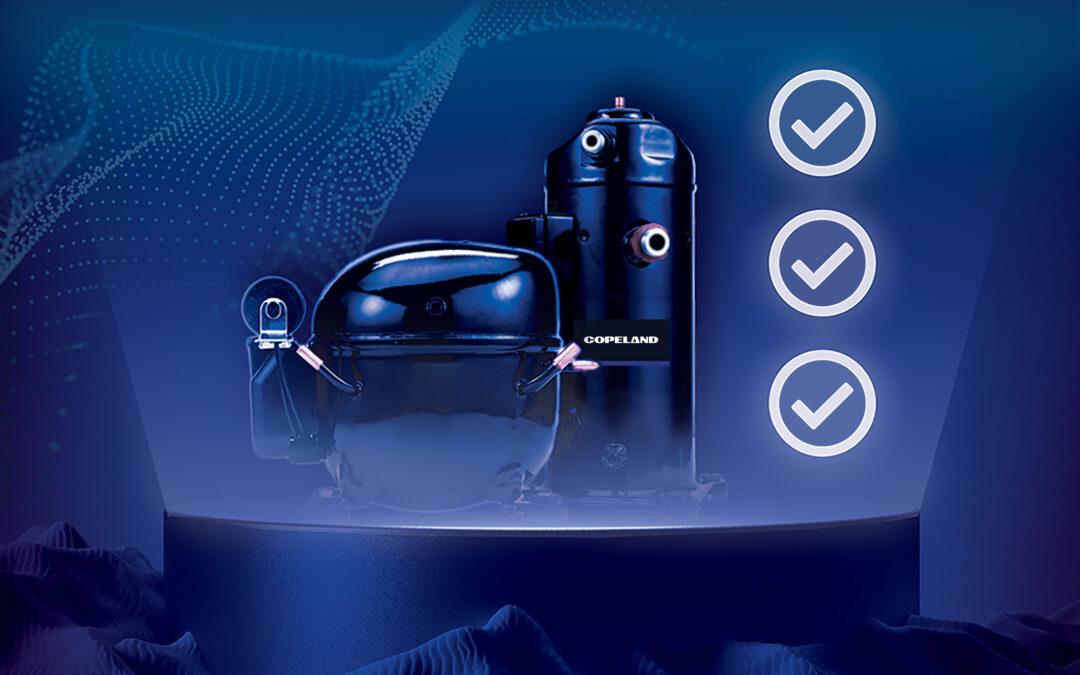*On June 1, 2023 Emerson’s Climate Technologies business became a new standalone company – Copeland. Though our name has changed, we are building on more than a century of HVACR innovation and industry leadership, and Copeland continues to offer the same products, industry stewardship, and learning opportunities you’ve grown to trust. Information found on this webpage posted before June 1, 2023 may contain our old name or branding, but you can be at ease knowing it was created with the knowledge and expertise of Copeland.

CO2 and ammonia (aka NH3) are two natural refrigerants that have historically played predictable roles in refrigeration. Ammonia has long been considered a workhorse in low-temperature, industrial refrigeration. More recently, CO2 has emerged as a leading alternative to hydrofluorocarbon (HFC) refrigerants, especially in commercial applications. Just as we became accustomed to their familiar roles, manufacturers are developing new refrigeration technologies that blur the lines between these traditional applications.
Driven by sustainability objectives and regulatory compliance, these natural refrigerant technologies are converging into competing market spaces — where CO2 is becoming a viable option in industrial applications and low-charge ammonia systems are making inroads into commercial applications.
CO2 has the global HFC phase-down to thank for gaining a foothold in commercial refrigeration. With near-zero global warming potential (GWP), it is one of the few ultra-low GWP refrigerants to be listed as acceptable by the Environmental Protection Agency’s Significant New Alternatives Policy. CO2 also has minimal safety or toxicity barriers to adoption with respect to building and fire codes.
On the other hand, ammonia has been the subject of increasing regulatory activity to address its potential toxicity concerns. The Occupational Safety and Health Administration (OSHA) requires operators to provide documentation for systems charged with at least 10,000 pounds of ammonia.
Operators of these large-charge systems, which are typically found in industrial applications, must be prepared for rigorous inspections enforced by OSHA’s National Emphasis Program (NEP) on process safety management industries.
To mitigate safety and compliance concerns, a trend is emerging that favors lower-charge ammonia systems and moving the NH3 portion out of occupied spaces. This is enabling these systems to be deployed not only in industrial settings, but also in commercial applications. Likewise, adaptations of common CO2 architectures are making their way into what have historically been ammonia-based, industrial applications.
Regardless of potential installation caveats or market segment, many end users are primarily motivated by the desire to leave a smaller carbon footprint. Natural refrigerants like CO2 and ammonia are helping them meet this objective through the deployment of low-GWP, energy-efficient systems.
That’s why both commercial and industrial operators are turning to original equipment manufacturers (OEMs) to explore the potential of these natural refrigerant options. In turn, OEMs are responding with new innovations and system technologies that borrow from traditional architectures and cross over into competing market spaces.
In my next blog, I’ll look at some innovations that are indicative of this convergence.
Read the full Accelerate America article on the roles of CO2 and ammonia [pg.16].

Electrical component considerations for A2L system safety
Electrical component considerations for A2L system safety As a new refrigerant category in the...

A2L refrigerant regulation updates: what you need to know today
Preparing for the approval and safe use of A2Ls in commercial refrigeration applications The move...

Address Efficiency Mandates with Compression Technologies
Strategies for complying with DOE and ENERGY STAR® in self-contained and remote condensing units...
